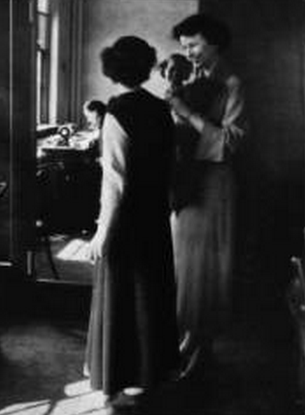It’s 1937 and Stephens is celebrating the 25th
anniversary of President James Madison Wood’s tenure on campus. The
Stephensophia is dedicated to him this year and dedicates several pages to his
life, career and impact on Stephens.
The yearbook’s foreward explains that Stephens is a
student-centered college—built around the individual girl and molded to her
changing needs. “The Stephens student is free to question and experiment in the
classroom, to gain poise, purpose and responsibility in her extra-curricular
participations; to develop the possibilities of her personality in the fullest
degree.”
We’re told Wood was born on an Ozark farm in southern
Missouri and went to State Teachers College at Warrensburg. He served as
principal and superintendent in several Missouri towns before completing
college at the University of Missouri and graduate work at Columbia University
in New York City.
Then, of course, he came to Stephens in 1912.
We love this description of him because, frankly, it reminds
us of our current president, Dianne Lynch:
“Visitors wonder at the temerity of a college president who
places on his office door the sign ‘Please Do Not Knock” and at the
unbelievable vitality of that man who all day long welcomes with an unhurried
air and friendly smile the throngs of students who stop in—to discuss college
problems, their own personal difficulties or more often merely to say a word of
greeting or just to talk.”
There’s a special letter in the book from Hugh Stephens on
behalf of the Board of Curators praising the transformation that has happened
on Wood’s watch.
Unfortunately, the 1937 Stephensophia also includes an In
Memoriam for Wood’s wife, Lela Raney Wood, who died in 1936. It says: “An
exponent of those virtues of mind and spirit which evidence intelligence and
refinement, unassuming and gentle in her every action, she expressed in living
the ideal of true womanhood and leaves to us the remembrance and influence of
that example.”
The Pan-hellenic Council this year under Betty Stewart is
holding clinics where students can get advice on arranging and decorating their
dorm rooms. There’s a room decorating contest, as well.
“Smartly Speaking” is a new publication advising new students on Stephens “modes and manners.”
Speaking of publications, it’s a good time to note that
Stephens at this time is the only junior college to have a chapter of Chi Delta
Phi, a national honorary literary society. The group holds weekly meetings and
publishes the “Standard,” the school’s literary journal. This week (our time), members
of the current English honor society, Sigma Tau Delta, are in Savannah reading
original works and accepting an award for our current literary journal, Harbinger.
Dance has a formal group this year. Members qualify through
presenting original dance compositions. The group performs recitals and for
Vespers services.
We’re told the Art Club designs posters for campus
advertising, much like our graphic design students do today.
The Stephensophia also reports that the only all-women
broadcast in the world is coming from the Basement Studio Players at KFRU on
the Stephens campus.
Instead of a school calendar or diary, the yearbook ends with a series of letters home. In October, a student writes about being homesick, but, of course, by October, she’s getting familiar with school. By December, she reminds family and friends to pick her up at the train and warns them to “be prepared for a changed woman.”
















